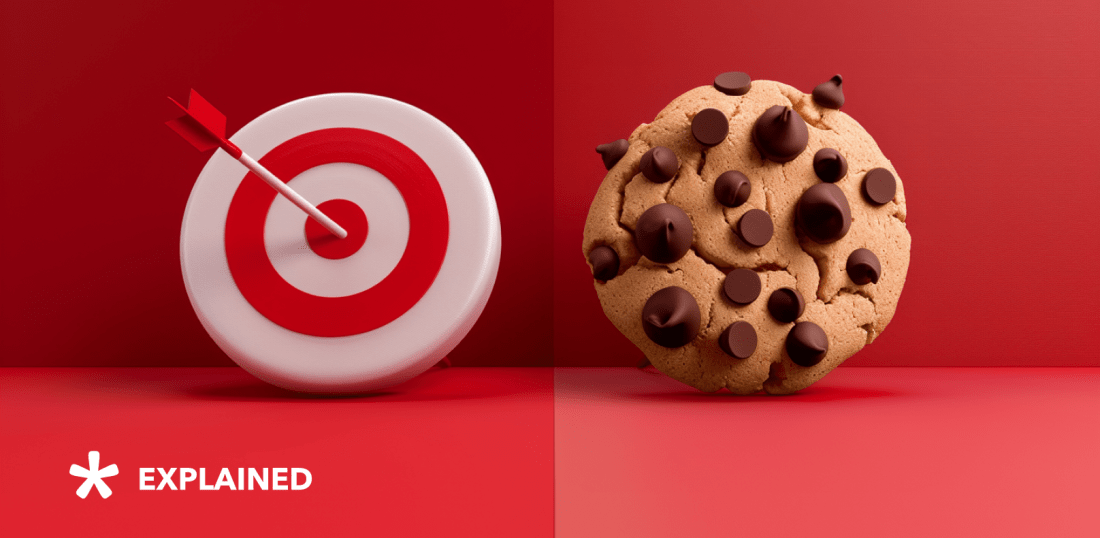
Device Fingerprinting: Pros and Cons of the Controversial Method
Device fingerprinting, or you may have heard of it as web fingerprinting, mobile device fingerprinting, browser fingerprinting, or machine fingerprinting, has a concept similar to collecting human fingerprints by a detective, but not so obvious.
With 3rd-party cookies soon becoming obsolete, fingerprinting will be one of the cookie alternatives that will help marketers target users online. But will it last for long? Read on to find out.
- What is device fingerprinting?
- How do marketers fingerprint devices?
- Which data is collected with device fingerprinting
- Pros: Device fingerprinting as an anti-fraud solution
- Cons: Data privacy concerns
- Preventing device fingerprint: recommendations for users
- 1. Choosing the most popular browser
- 2. Private mode and incognito browsing
- 3. Flash and Java-script disablement
- 4. VPN use
- To wrap up
What is device fingerprinting?
Device fingerprinting is a technique, which analyses users’ specific and unique configuration of software to determine their device or browser and, ultimately, track them online.
Simply put, every time you connect to the web, you leave some hints behind about the device you’re connected through. These hints are collected and used to create a profile about your device.
For fingerprinting the device, two things are needed: the operating system and the browser. Such information as your language preferences, time (down to milliseconds) your Internet Protocol (IP), screen resolution, and installed plug-ins, helps to analyze the profile of your device with machine fingerprinting.
How do marketers fingerprint devices?
Since fingerprinting does not require client-side storage of data, it is very difficult to notice and almost impossible to avoid. If 1st-party cookies are only valid within one domain, the unique characteristics remain unchanged when visiting different sites. This greatly simplifies tracking the user’s movements on the Internet. Worse, unlike cookies, unique traits cannot be disabled. The user’s efforts will lead to the maximum replacement of one set of features with another, even more recognizable.
For years, 3rd-party cookies were the main method for targeting people. HTTP cookies are small text files downloaded on your computer via browser during a stay on a website. Once you open the website in your browser, cookies are stored on your PC or Mac. The next time you visit it, you will get a more personalized experience. For instance, cookies provide information about your logins, items you put in a shopping cart, the size of your screen, and more.
3rd-party cookies will turn obsolete in 2022. Devices changed greatly, and third-party cookies are being replaced with methods, which provide more effective targeting. Moreover, cookies can be easily erased by a client and are recognized by ad blockers without difficulty. Marketers and advertisers can’t continue using unreliable targeting services, so more of them choose device fingerprinting instead of cookies.
In contrast to web cookies that are located on the client-side in the user’s browser, device fingerprinting is served on a server-side database.
Which data is collected with device fingerprinting
As we already stated, device fingerprinting is a method of gathering particular specifications of your device. It provides a wide range of data collection and sends it to a server after every request. Whatever you’re doing on the web, device fingerprinting identifies the following:
- HTTP header
- Display resolution
- Browser type and version
- Device time
- Machine number
- Flash data
- Level of battery
- Mime types
- Operating system’s information
- Variety of fonts
- Silverlight data
- IP address and much more information.
Pros: Device fingerprinting as an anti-fraud solution
The pros of device fingerprinting are that it helps to prevent online fraud. For instance, it can help to identify whether the Web banking session has been intercepted.
What is more, the technique allows to track fraudsters who steal login and payment card numbers. Proceeding transactions, they face the repeating process of employing trial and error methods. Fraudsters are just not able to change devices so often and can be tracked.
Cons: Data privacy concerns
Browser fingerprinting violates current privacy regulations as this way the users are not aware of the amount of their data transferred and who is getting hold of it. Users cannot simply clear their fingerprints like cookies, which poses concern even among the most privacy-conscious users.
Browsers are already working on fingerprinting restrictions and block some of the user specifications that are passed with the request. Besides, The World Wide Web Consortium (W3C) recently produced and published notes and guidance for Web specification authors as to reduce the fingerprinting exposure.
Thus, device fingerprinting is rather a temporary solution than a full-fledged cookie alternative and its capabilities will soon. It’s clear that advertisers will soon be unable to use it to identify users.
Our advice for marketers is to focus on more privacy-forward identification solutions, including universal identifiers (like Admixer ID) and user identity graphs. They work with 1st-party user data obtained with proper consent and comply with effective privacy regulations.
Preventing device fingerprint: recommendations for users
If you are disturbed by the fact that your data is being collected and want to preclude its sharing through browser fingerprinting, you can stop it.
The only option to do it absolutely is to stop using the Internet at all, alas. We should admit that it’s pretty much impossible to keep your browsers’ data in disguise because HTTP headers are used in browsers to compile your device fingerprints.
But, it’s not that bad.
Preventing device fingerprinting is not insurmountable. Besides, it is a very significant action to ensure safety while surfing the Internet. There are specific solutions, which make your personal web browsing information and your identity harder to trace.
1. Choosing the most popular browser
In this regard, you should forget about originality. Only by choosing the most popular browser, you can stay safe.

Thаt is a great option to prevent device fingerprinting. You can’t get easily targeted when you are among numerous browser users.
Moreover, not only should you use a popular browser, but also keep it updated. It’s essential to download the latest version of your browser. Browsers are trying to keep their security solid and include improvements in each update, reducing the chances of becoming the target of device fingerprinting.
The latest version of the Mozilla Firefox browser claims to protect you against fingerprinting of devices. The browser blocks third-party requests to companies, which were caught red-handed in using device fingerprinting. Apple and Google also announced that they would restrict browser fingerprinting. Apple is going to hide the data, which can be fingerprinted, while Google made a draft of a “privacy budget” to limit the amount of data to fingerprint from the device by a certain company.
2. Private mode and incognito browsing
Another method to reduce device fingerprinting is to choose a private mode. This action doesn’t stop the device fingerprinting completely, but it limits the general amount of data that is accessible to fingerprint.
In addition, we recommend the Tor browser for Incognito browsing, which is highly safe and confidential. Famous with dissidents in countries with censored Internet traffic. Tor browser has anti-fingerprinting features, it aims to make all users unidentified, reducing the possibility for you to be fingerprinted based on your browser and device information. The browser has the technology, which restricts the identification of your IP address. It hides your personal information, whether it’s the language you prefer or the time zone you live in.
And we should make a small reminder that the most anonymous way to use the Internet browser is to exclude any plug-ins or extensions from the installed features. The one-of-a-kind fingerprint consists of all our extensions and plug-ins, not so many people choose the same ones.
Keeping your browser in the standard version is the best way to keep it untraceable.
3. Flash and Java-script disablement
Device fingerprinting applications mostly operate on Java-script or Flash. The great news is that browsers block it themselves, so in some way, it shouldn’t bother you. You can check if your browser is still operating with any of them and disable or completely uninstall all of the features.
If not, your data will be tracked not so long because all of the major browsers have rejected the idea of supporting them.
4. VPN use
A virtual private network or shortened VPN increases your safety, privacy, and security. It routes your traffic by third-party servers masking your actual location. You seem like you’re using the Internet in some other place, country, or even continent. VPN creates a virtual IP address and efficiently masks user’s information. Therefore, a device fingerprint will include a fake IP address.
Similar to browsers, we recommend using a VPN service. The majority of people choose that. The more servers to connect with, the more difficult real information is to reach.
To wrap up
Device fingerprinting is affecting our online privacy significantly. The digital world is developing fast and causing challenges both for marketers and consumers. Because cookies are becoming obsolete and are losing their efficiency, device fingerprinting provides more powerful ways of targeting and collecting users’ data. However, most device fingerprinting practices hardly comply with GDPR and other data protection regulations.
It is difficult to prevent the fingerprint of the device completely and almost impossible, but there are some ways to reduce the chances of a fingerprint. By the way, it’s only up to a user whether to keep his data private and disable device fingerprinting or to allow it and stay available for a more personalized advertising experience.
Device fingerprinting is effective enough in stopping fraud and preventing suspicious payments. Also, the techniques of fingerprinting the device gained success in marketing and advertising.




